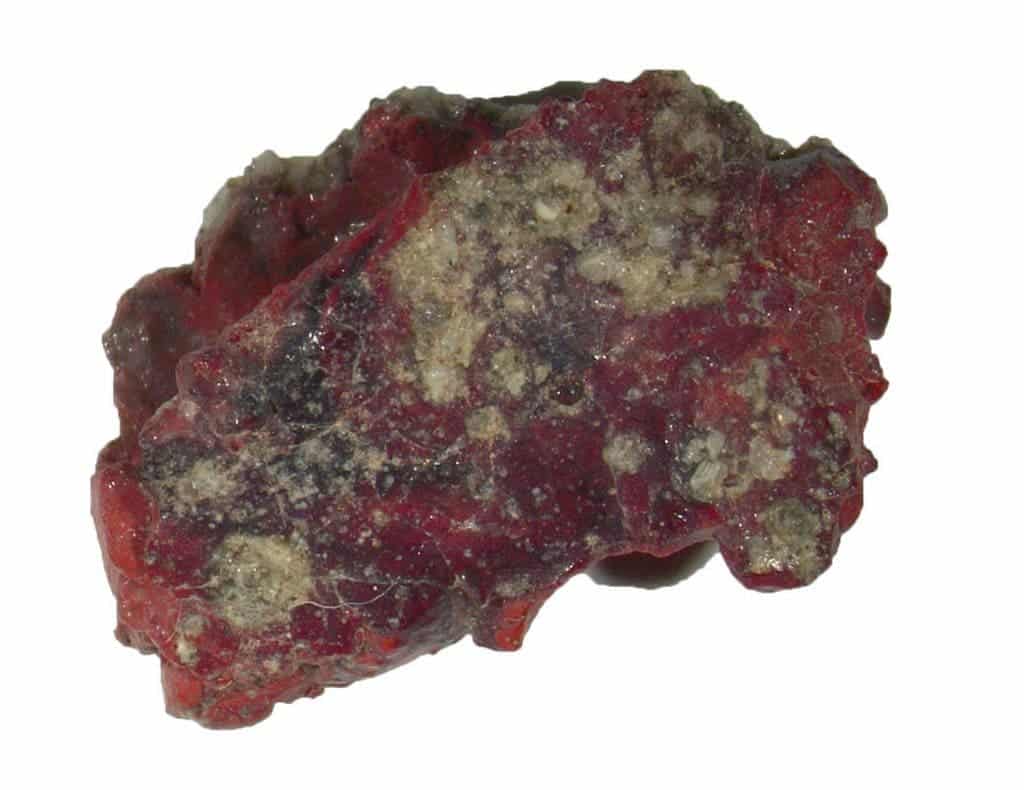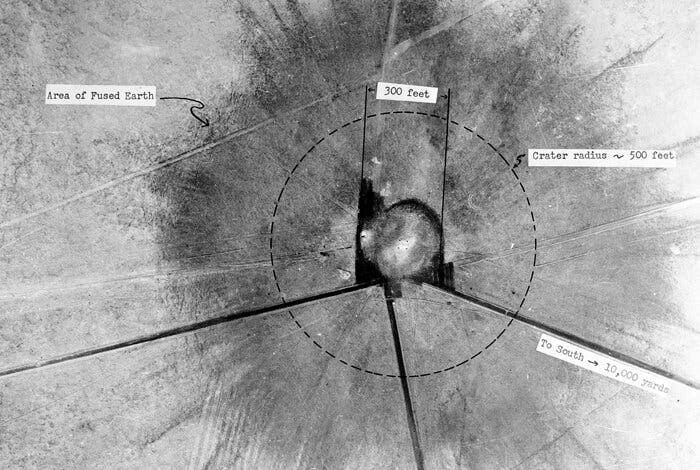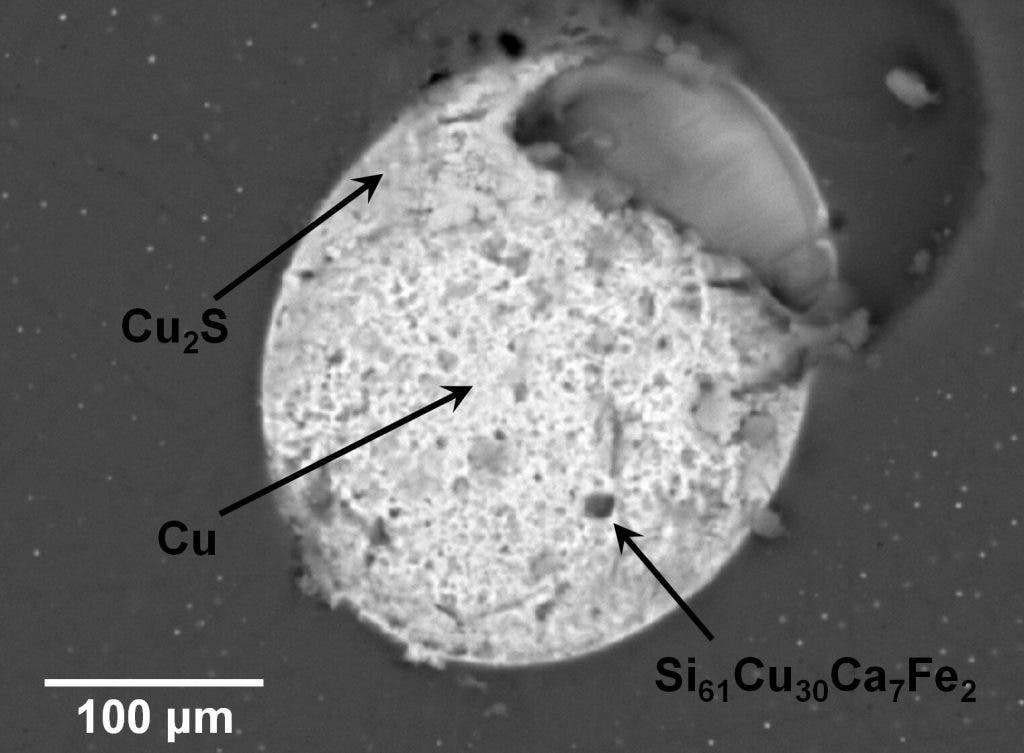
On July 16, 1945, the United States Army performed the very first atomic bomb detonation at Trinity Site, New Mexico. The traumatic event obliterated the 30-meter-high test tower, as well as all the miles of copper wires that were connected to measuring and recording instruments. Strikingly, this vaporized debris fused with sand to form a new glassy material known as trinitite, which scientists have recently found at the site — a testament to the devastating, matter-altering power of nuclear weapons.
The red trinitite (Si61Cu30Ca7Fe2) has 5-fold rotational symmetry, which is not possible in a natural crystal. For this reason, it is classed as a “quasicrystal”, exotic materials that do not follow the rules of classical crystallization.
Most crystals are composed of a three-dimensional arrangement of atoms that repeat in an orderly pattern. Depending on their chemical composition, they have different symmetries. For example, atoms arranged in repeating cubes have fourfold symmetry. Atoms arranged as equilateral triangles have threefold symmetries.
Quasicrystals have an atomic structure of the constituent elements, but the pattern is not periodic (it never repeats itself).
They’re remarkable for two reasons: firstly, they’re incredibly rare in nature, and secondly, they’re incredibly unlikely. In fact, when the existence of quasicrystals was first predicted, it cost the career of Daniel Shechtman, the Israeli chemist who first discovered them and lost his job because everyone thought he was mad.
“The head of my lab came to me smiling sheepishly, and put a book on my desk and said: ‘Danny, why don’t you read this and see that it is impossible what you are saying,’” Shechtman, now employed at the Technion – Israel Institute of Technology in Haifa, once recounted.
Shechtman was vindicated decades later after he was awarded the 2011 Nobel Prize in Chemistry.

Now, physicists at the Los Alamos National Laboratory have published a new study showing how the extreme shock, temperature, and pressure caused by a nuclear blast can birth new quasicrystals. Using scanning electron microscopy and X-ray diffraction, the researchers revealed the atomic structure of the 20-sided quasicrystal and its five-fold rotational symmetry that used to be considered impossible by conventional standards.

The scientists still don’t know exactly how the trinitite formed step by step, but it seems like the thermodynamic shock under which this quasicrystal formed is comparable to the conditions that led to the formation of natural quasicrystals found in the Khatyrka meteorite, dating back hundreds of millions of year ago.
“This quasicrystal is magnificent in its complexity—but nobody can yet tell us why it was formed in this way. But someday, a scientist or engineer is going to figure that out and the scales will be lifted from our eyes and we will have a thermodynamic explanation for its creation. Then, I hope, we can use that knowledge to better understand nuclear explosions and ultimately lead to a more complete picture of what a nuclear test represents,” said Terry C. Wallace, director emeritus of Los Alamos National Laboratory and co-author of the paper.
This trinitite is effectively the oldest artificial quasicrystal and could someday help scientists better understand illicit nuclear blasts and curb nuclear proliferation.









